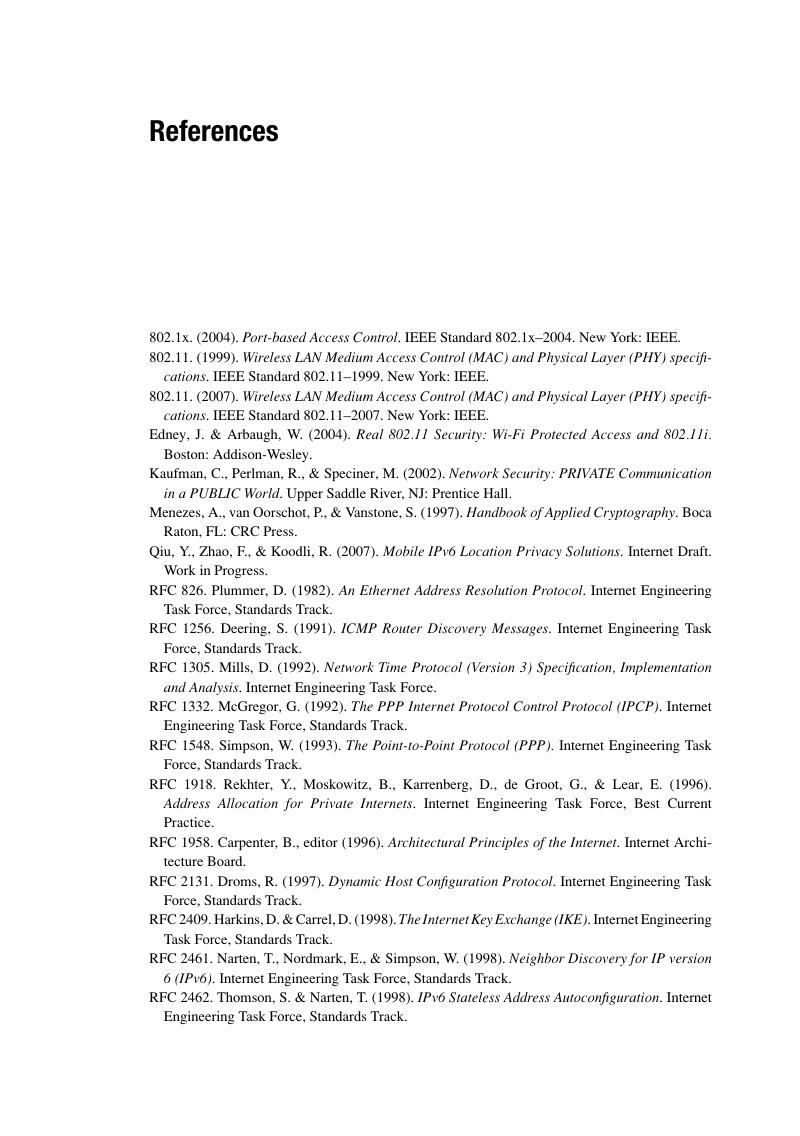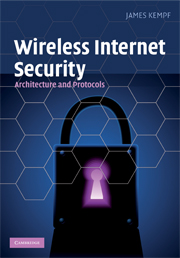Book contents
- Frontmatter
- Contents
- Preface
- Acknowledgements
- 1 Security basics
- 2 Network system architecture basics
- 3 Cryptographic algorithms and security primitives
- 4 Wireless IP network access control
- 5 Local IP subnet configuration and address resolution security
- 6 Security for global IP mobility
- 7 Location privacy
- References
- Index
- References
References
Published online by Cambridge University Press: 06 July 2010
- Frontmatter
- Contents
- Preface
- Acknowledgements
- 1 Security basics
- 2 Network system architecture basics
- 3 Cryptographic algorithms and security primitives
- 4 Wireless IP network access control
- 5 Local IP subnet configuration and address resolution security
- 6 Security for global IP mobility
- 7 Location privacy
- References
- Index
- References
Summary

- Type
- Chapter
- Information
- Wireless Internet SecurityArchitecture and Protocols, pp. 199 - 201Publisher: Cambridge University PressPrint publication year: 2008



